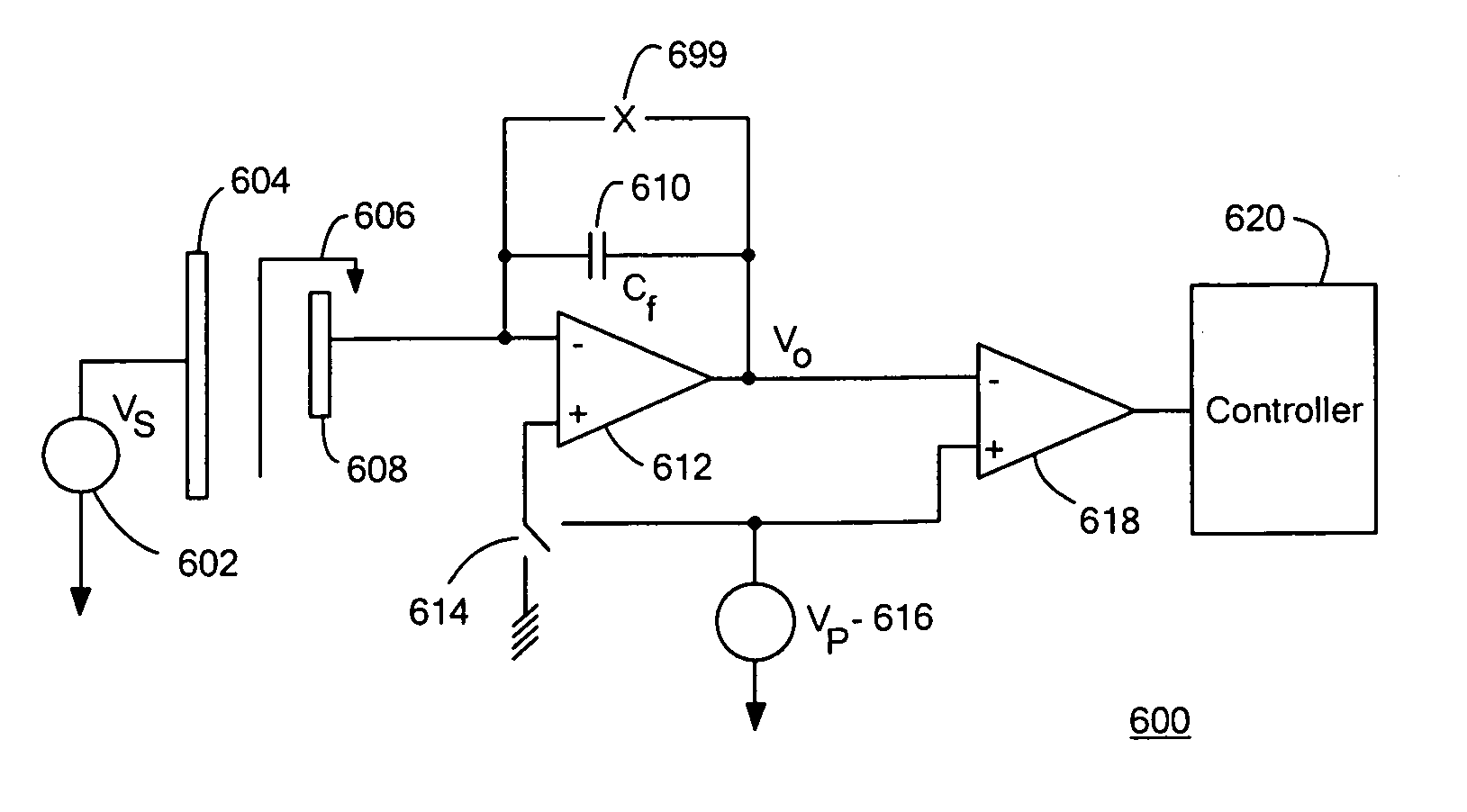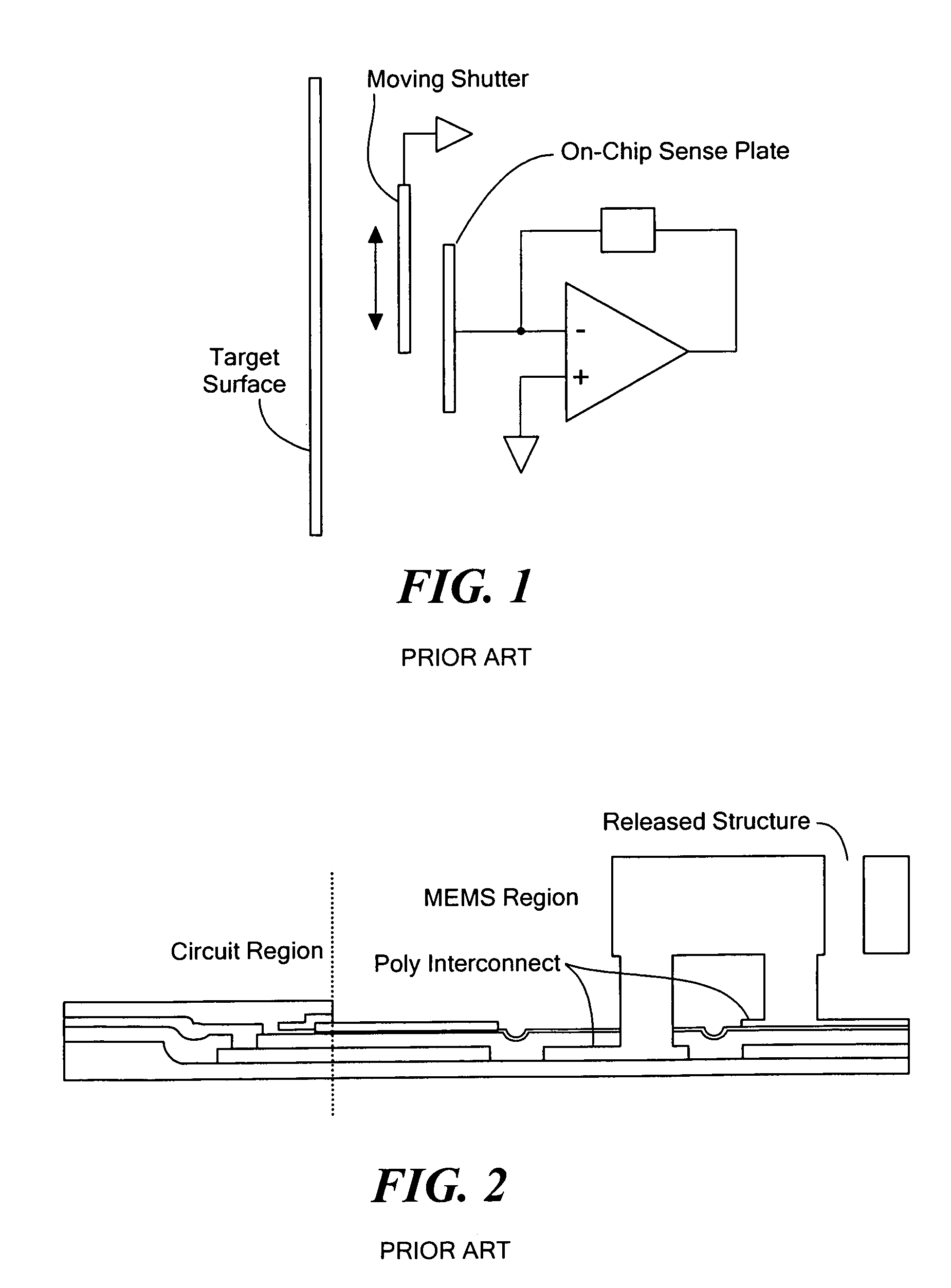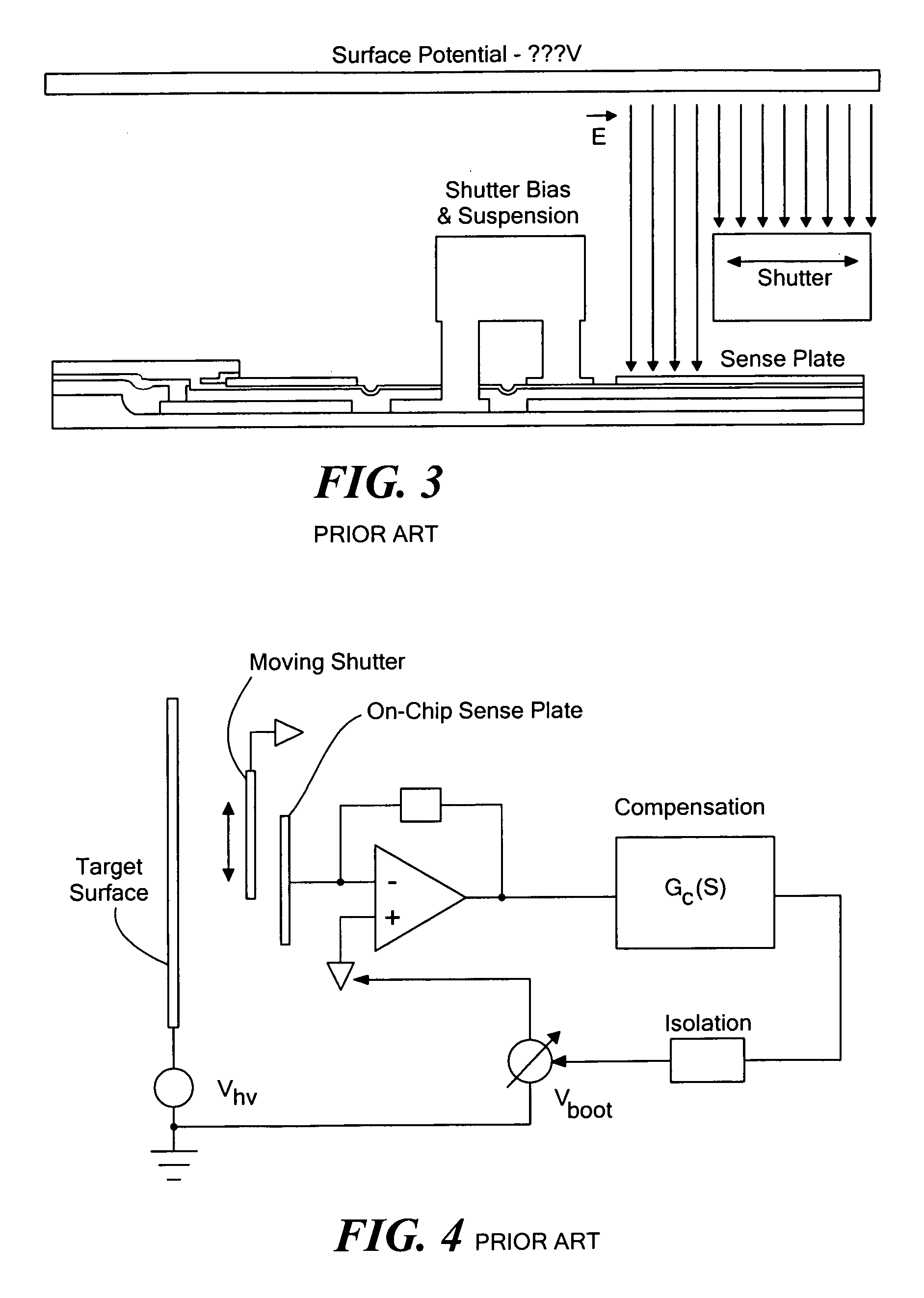Non-contact high-voltage electrometer architecture with low-voltage feedback
a low-voltage feedback, non-contact technology, applied in the field of voltmeters, can solve the problems inconvenient measurement, and inability to fully decouple the gap variation from the measurement accuracy, so as to reduce the cost of electrometers, maintain the accuracy of existing high-end commercial instruments, and solve the problem of inconvenient in-line trim
- Summary
- Abstract
- Description
- Claims
- Application Information
AI Technical Summary
Benefits of technology
Problems solved by technology
Method used
Image
Examples
Embodiment Construction
[0028]Shortcomings of existing non-contact voltmeter designs can be addressed with either of two improved servo architectures. The first architecture overcomes the shortcomings of a lateral field-mill's Co to Cm ratio by multi-sampling the detector capacitance during the sampling step. The second architecture fully eliminates the gap sensitivity by using a parallel reference capacitance Co that is significantly larger than the modulation capacitor. Both techniques improve on the state-of-the-art, allow for ease of MEMS integration, and allow use of only low-voltage electronics.
Improved Non-Contact Voltmeter Architecture #1: Multi-Sampling
[0029]In an exemplary multi-sampling architecture, a movable shutter is used to selectively expose a detector plate with an equivalent capacitance Cm to a target surface having an unknown voltage potential Vs. In one sample stage, a charge Vs*B is measured, where B is proportional to Cm. In another sample stage, a charge Vp*B is measured, where Vp i...
PUM
 Login to View More
Login to View More Abstract
Description
Claims
Application Information
 Login to View More
Login to View More - R&D
- Intellectual Property
- Life Sciences
- Materials
- Tech Scout
- Unparalleled Data Quality
- Higher Quality Content
- 60% Fewer Hallucinations
Browse by: Latest US Patents, China's latest patents, Technical Efficacy Thesaurus, Application Domain, Technology Topic, Popular Technical Reports.
© 2025 PatSnap. All rights reserved.Legal|Privacy policy|Modern Slavery Act Transparency Statement|Sitemap|About US| Contact US: help@patsnap.com



